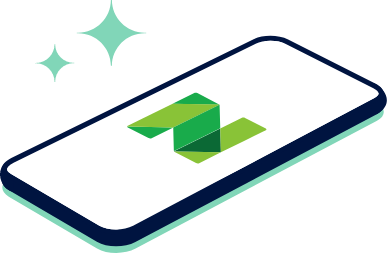The Best Cheap Cell Phone Plans
Want the cheapest prepaid phone plan that still fits your phone service needs? Mint Mobile, Visible, US Mobile and Consumer Cellular are among the plethora of cheap plan options.

Many, or all, of the products featured on this page are from our advertising partners who compensate us when you take certain actions on our website or click to take an action on their website. However, this does not influence our evaluations. Our opinions are our own. Here is a list of our partners and here's how we make money.
The cheapest cell phone plans are typically prepaid, which means you only commit to the month(s) of service you pay for upfront. There’s usually no credit check to sign up and you have many choices.
What’s more is that these cheaper cell phone plan providers typically run on one or more of the three nationwide networks (those from Verizon, T-Mobile and AT&T).
Cheaper plan, same nationwide coverage, what’s the catch?
Prepaid plans tend to come with fewer perks (such as a Disney+ or Netflix subscription), can have less access to live customer service, and sometimes the fine print suggests network speeds may be slowed in favor of postpaid plan customers. Plus, an overwhelming number of options can make it hard to choose a cheap plan.
We’re here to help you map out the cheap cell phone plan landscape. We evaluated plans offered by popular cell phone service providers, considering brand ownership, nationwide network affiliation and monthly plan prices before taxes and fees.
» Cut your cell phone bill: Use this script and save
When choosing a plan, lots of catchy marketing and fine print make it a windy road. But if you explore the options, you’ll likely save money with a prepaid plan.
Note: Most prices in the lists below are before taxes and fees.
Stress less. Track more.
See the full picture: savings, debt, investments and more. Smarter money moves start in our app.
Cheap(er) cell phone plans from Verizon, T-Mobile and AT&T
If you want to buy cell phone service directly from one of the big three wireless companies — Verizon, T-Mobile or AT&T — try one of their prepaid plans to save over a single-line postpaid plan.
Big three prepaid plans
Each offers a set of prepaid plans with unlimited talk and text and varying levels of data. Plans with a set amount of data run the lowest. (You may have to hunt around for the “prepaid” section of these cell phone companies’ websites to bypass the flagship plans and get to cheaper options.)
AT&T prepaid: Unlimited talk and text, 10GB of data for $25 per month.
T-Mobile prepaid: Unlimited talk and text, 15GB of data for $40 per month (with an autopay discount). The first month is $45.
Verizon prepaid: Unlimited talk and text, 15GB of data for $35 per month (with an autopay discount). The first month is $45.
Cheap cell phone plans from brands owned by the big three
Each of the big three carriers has introduced or acquired competing sub-brands in the prepaid wireless space. Confusion aside, more competition means more opportunities for you, the consumer, to lower your cell phone bill.
Consider these popular options that are owned by the big three national carriers.
| Brand | Owner/Network | Check them out for |
|---|---|---|
| Cricket Wireless | AT&T. | A talk-and-text plan with 10GB of data for $30 per month. Note: You’ll have to step up to one of Cricket’s pricier unlimited plans to get mobile hotspot included. |
| Metro by T-Mobile | T-Mobile. | A talk-and-text-plan with data for $25 per month. Note: Note: You can transfer your old number or get a new one; both will get you unlimited data. Autopay is required to get the $25 rate. The first month is $30. |
| Mint Mobile | T-Mobile. | A talk-and-text plan with 5GB of data for $25 per month, billed for three full months upfront. Note: If you like the service, you can get this plan down to $15 per month by renewing and paying for a full 12 months of service upfront. |
| Visible | Verizon. | An affordable baseline unlimited data plan, with mobile hotspot included, for $19 per month. Note: Customer service is mostly by web chat with Visible, which could make resolving issues tedious. |
| Tracfone | Verizon. | A super basic 30-minute talk, text and web plan, starting at $9.99 per month. Note: This plan is only for flip phones. Tracfone has other plans that include data options. You can save on the cost of some plans by setting your payment to “Auto-Refill” ahead of a new billing cycle. |
But wait, there’s more
Total by Verizon and Connect by T-Mobile are two lesser-known wireless spinoffs that may be worth a look. The latter boasts a $15-a-month plan that includes unlimited talk and text with 5G of data.
Cheap cell phone plans from brands that resell network service
Wireless service brands not acquired or started by Verizon, AT&T or T-Mobile typically purchase and resell service on one or more of the big three’s nationwide networks.
Consider these options.
| Brand | Network(s) | Check them out for |
|---|---|---|
| Consumer Cellular | AT&T. | A talk-and-text plan with a little data (1GB) for $20 per month, and a few lower-tech device options for those who don’t want a smartphone. Note: Plans are compatible with techier iPhone and Android devices, too. |
| Google Fi | T-Mobile and U.S. Cellular (a regional network). | A pay-by-the-gig plan for $20 per month, plus $10 per GB of data. Note: iPhones are compatible, but phones specifically designed for Fi, like Google’s Pixel 8, switch between T-Mobile’s and U.S. Cellular’s networks, as well as secure Wi-Fi connections. Phones not designed for Fi use the T-Mobile network. |
| US Mobile | Verizon, T-Mobile and AT&T. | A "light" build-your-own plan that can be as low as $8 per month (when paid annually) for unlimited talk and text, plus 2GB of data. Note: If you need more data, you can use the Top Up feature, which allows you to add more data to your plan mid-cycle. |
But wait, there’s more
There are too many more to list, actually. A few other cheap cell phone plan options that might be worth a look: Ting and Tello, as well as Ultra Mobile (which also was acquired by T-Mobile, along with Mint, and makes a similar promise to retain its pricing). Additionally, the TextNow app allows you to call and text for free using Wi-Fi. Upgrade options are available to add data and remove ads, but the basic service is free.
As well, you can explore whether you're eligible for the federal Lifeline program, which provides discounted phone service for low-income households.
The best cheap cell phone plans according to Reddit
We sifted through Reddit forums to get a pulse check on how users feel about the best cheap cell phone plans. We used an AI tool to help analyze the feedback. Here's a summary of our analysis. People post anonymously, so we cannot confirm their individual experiences or circumstances.
Visible, Mint Mobile and US Mobile were the most commonly mentioned options. These were popular because they offer significant savings while using major carriers' networks. Consumer Cellular was also recommended for good customer service and reasonable rates, particularly for older users.
Many emphasized that prepaid plans generally offer the best savings, with some users reporting cutting their bills by 50% or more compared with major carriers. The key trade-offs mentioned were potentially slower data speeds during peak times and fewer perks compared with major carriers, but most users found these acceptable given the cost savings.
Things to consider
With so many choices available, how do you decide which plan is right for you?
While the best plan is one that will fit into your budget, consider other factors, too. For instance, how much data do you use each month and how many lines will you need? Are there times when you’d like to use your phone outside the U.S.?
Assessing your data and usage goals, along with your budget, will help you narrow the many choices into a few that will work best for you.

Stress less. Track more.
See the full picture: savings, debt, investments and more. Smarter money moves start in our app.
How to switch plans and keep your number
Perhaps the most daunting factor in jumping to a new plan is the fear of losing your original phone number. But the Federal Communications Commission notes that consumers staying in the same geographic area can take their number to a new service provider, and sets rules on charges and speed of service.
Many providers are making this easy now. For example, Mint Mobile offers detailed instructions for how to switch from all the major carriers while keeping your number intact. Likewise, Consumer Cellular also states that it is easy to bring your number with you, though you’ll need to wait to cancel your existing plan until the transfer process is complete.
The bottom line: Read the fine print from your existing provider and the one you’re switching to before taking any action. The odds are good that you’ll be able to carry your phone number over, but you’ll need to follow each provider’s instructions.
Article sources
NerdWallet writers are subject matter authorities who use primary,
trustworthy sources to inform their work, including peer-reviewed
studies, government websites, academic research and interviews with
industry experts. All content is fact-checked for accuracy, timeliness
and relevance. You can learn more about NerdWallet's high
standards for journalism by reading our
editorial guidelines.


